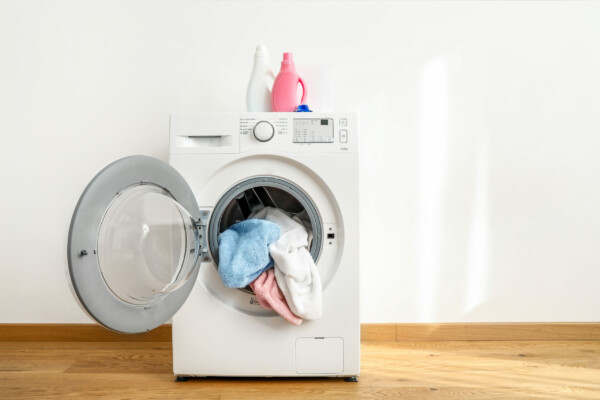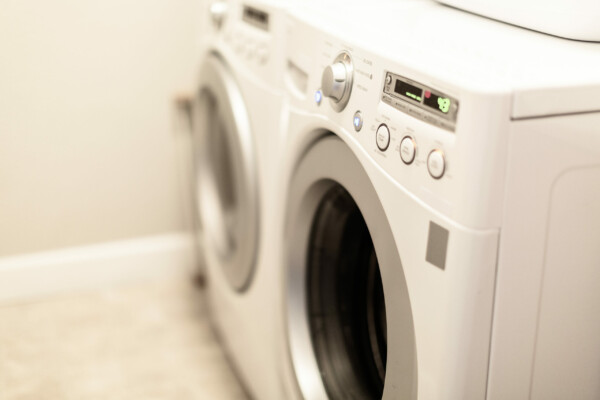Why Is My GE Dishwasher Not Draining All The Way?
Spills of water and filthy dishes at the end of a GE dishwasher force drain cycle are standard indicators of problems. A dishwasher that won’t drain is an issue you need to repair right away.
In addition, there is a chance that leaking water will cause more damage, and dirty dishes will start to gather in the sink.
The most common reason your GE dishwasher doesn’t drain fully is likely due to a clogged drain pipe. Cleaning or clearing the pipe should help resolve the issue.
However, there could be alternative causes. Find additional information in our article.
How to Drain GE Dishwasher?
Several issues may occur and lead to poor GE dishwasher draining. Check your device for proper work or call the expert who can analyze it.
Drain Pipe and Garbage Disposal
Before analyzing the appliance’s components that could generate the drainage issue, ensure that the pipe that the dishwasher flows into is not clogged. If your dishwasher is connected to a waste disposal, make sure it is free of debris. It is important to note that the garbage disposal drain tube, which connects to the dishwasher drain line, might become clogged.
Separating the drain line and cleaning the disposal’s waste tube may resolve the drainage problem. If the dishwasher is currently installed in the kitchen, make sure you remove the waste disposal knockout cap from the drain tube.
Air Gap & High Loop
If the GE dishwasher drain line isn’t applied to waste disposal, it could be connected to the air gap. However, not all appliances may have an air gap, so check whether the drain hose is placed in a high loop beneath the sink. These elements are intended to prevent wastewater from running back into the GE dishwasher while draining.
When the air gap is clogged or the drain hose does not remain in a high loop position, water may overflow, and the GE profile dishwasher not draining, causing drainage breakage.
The high-loop method functions by looping the drainage hose up and fastening it directly under the sink. Read the dishwasher instructions for the precise drain hose specifications.
Filter and Sump
Based on the GE dishwasher model, it may include a replaceable filter. Replacing the filter may also help you clean debris from the drain pump. Follow the step-by-step guide to do it properly and not leave standing water in filter:
- Remove the filter.
- Cleanse it with warm water and detergent.
- Make sure you have removed all the dirt.
The filter is placed in the dishwasher’s sump area. The sump system belongs to the dishwasher’s bucket. The sump’s main function is to gather water for the pump. Keeping the sump area clean and free of big waste particles can help the dishwasher drain to avoid future blockages.
To ensure safety, turn off the dishwasher before removing the filter.
Drain Pump
If the drain hose or filter operates properly and is correctly attached, the dishwasher’s drain pump is most likely incorrect. Pump motors may be broken both mechanically and electrically. A mechanical failure usually occurs due to a broken impeller or a foreign element blocking the drain pump.
When you switch on the drain pump, the rotating impeller should operate properly. If it doesn’t rotate, you should probably change the drain pump. In order for the impeller to be damaged, it must be replaced, either separately or as a whole.
To identify whether the drain pump clogged electronically, test the device for continuity with a multimeter. If it fails the test, you need to replace it. Note that most operating drain pumps should display readings of almost 200 ohms.
According to the dishwasher type, the drain pump can be reached by taking off the bottom-front kick plate or by placing the dishwasher on its backside and loosening the access panel beneath it. On the other hand, you can reach the drain pump by removing the filter from the device’s tub.
Drain Solenoid
The drain solenoid activates the drain valve and allows liquid to flow out of the dishwasher. Extremely hot and cold temperatures can cause the solenoid to fail. If it doesn’t operate properly, the valve remains closed, and the dishwasher fails to drain.
The drain solenoid, like the pump motor, can be analyzed with a multimeter to ensure its continuity. If it fails, then you should replace it. This element is positioned near the motor or on the drain pump. You can reach it by taking away the bottom-front kick plate or access panel.
How to Unclog GE Dishwasher?
Dishwashers of older models may be more likely to clog than newer ones. Years of usage can lead to managing food waste and other elements gathering in your dishwasher’s pipes and filter, preventing it from operating properly.
Clogs are the most common issue with older devices, which is why there is an instruction you should know:
- Switch off the GE dishwasher and take off the dishes from it.
- Unplug the device and drain the standing water in bottom with towels.
- Remove the filter basket and rinse it with warm water and mild soap.
- Remove the sump from the appliance and remove any dirt from it.
- Clean the drain hose by straightening any kinks in it.
- Switch on the dishwasher and check whether it operates correctly.
GE dishwashers come with the manufacturer’s instruction that has a clear description of how to troubleshoot clogs. If you can find the solution to the breakage, call the technician assistant or plumber.
Note that the filter basket and sump should be cleaned regularly, even if they don’t have any clogs to provide manual drain. This way allows you to prevent potential damage to the device and keep it always clean.
Conclusion
Each home appliance may have damages and some of its elements need to be replaced. Make sure that your GE dishwasher is within the manufacturer’s warranty. It allows you to replace the components and get a new one specifically for your model or get a free dishwasher repairment.
However, take care of your home appliances providing long-lasting functioning.
Date of page creation: March 11, 2024
Page update date: April 02, 2024
Ask a Question



